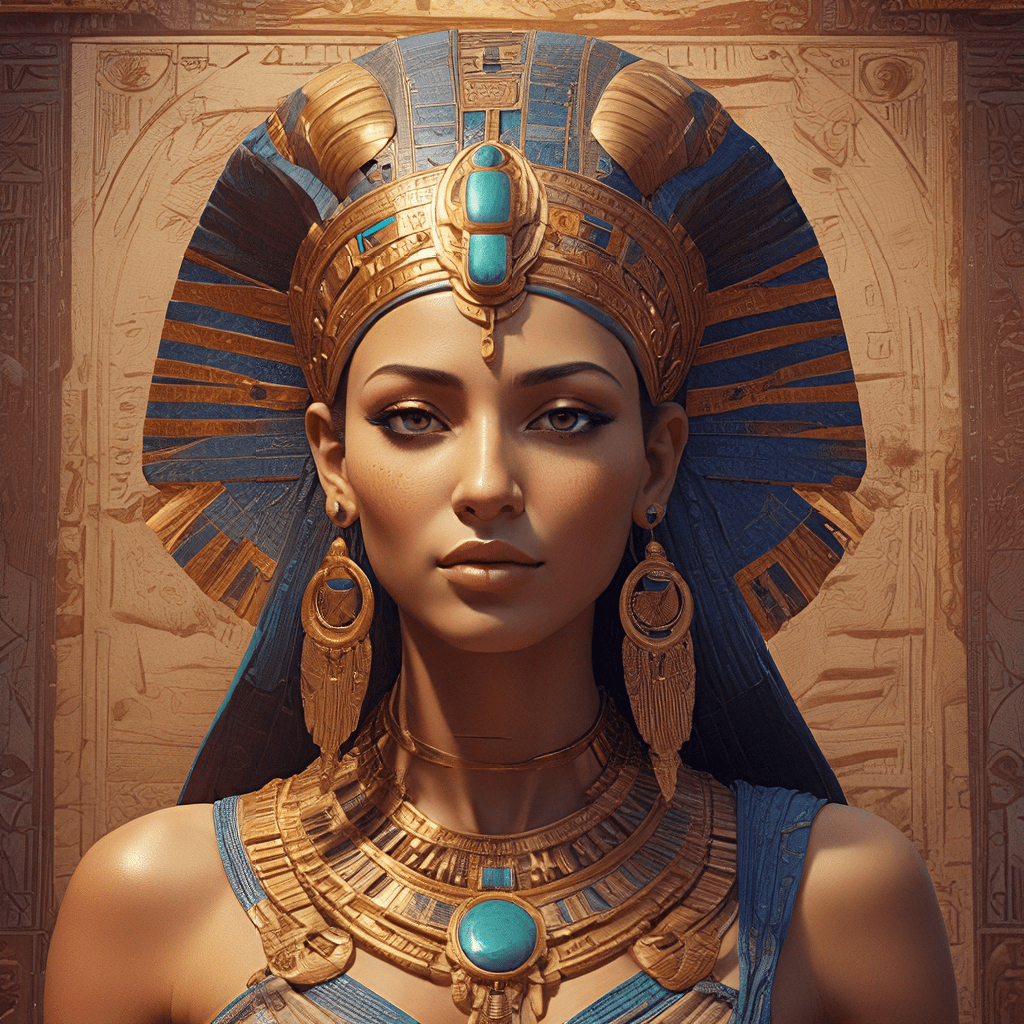Hathor: The Goddess of Beauty
1. Introduction
Hathor, the goddess of beauty, love, music, and joy, holds a prominent position in ancient Egyptian mythology. Her worship was widespread throughout Egypt, and her influence can be seen in art, architecture, and religious practices. She was a complex and multifaceted goddess, embodying both the nurturing and fierce aspects of the divine feminine.
Beauty and love were highly valued in ancient Egyptian culture. Hathor was revered for her beauty, which was seen as a reflection of her divine power and grace. She was also associated with the pleasures of life, such as music, dance, and wine. Hathor’s presence was believed to bring joy, fertility, and abundance.
2. Origins and Evolution
Hathor’s origins can be traced back to the sky goddess Nut, who represented the heavens. Over time, Hathor evolved from a sky goddess to a goddess of love and beauty. This transformation was likely due to the importance of femininity and fertility in ancient Egyptian society.
In the creation myth, Hathor plays a significant role. She is said to have emerged from the eye of the sun god Ra, representing the life-giving power of the sun. This association with Ra further solidified her status as a powerful and benevolent deity.
3. Attributes and Symbolism
Hathor is often depicted as a cow, a symbol of her nurturing nature and connection to motherhood. The cow is also associated with fertility and abundance, reflecting Hathor’s role as a goddess of life and prosperity.
The sistrum, a musical instrument that resembles a rattle, was sacred to Hathor. The sound of the sistrum was believed to please Hathor and invite her presence. In religious ceremonies, priests would shake the sistrum to invoke Hathor’s blessings.
The lotus flower, a symbol of rebirth and beauty, is also associated with Hathor. Its delicate petals and vibrant colors were seen as a representation of Hathor’s grace and elegance. The lotus flower’s ability to bloom in water, a symbol of life and renewal, further solidified its connection to Hathor.
4. Hathor’s Association with Music and Dance
Hathor is considered the patroness of music and dance, and her presence was believed to bring joy and harmony. Music and dance were integral parts of Egyptian religious ceremonies, and they were often performed in honor of Hathor.
The ancient Egyptians believed that music and dance had the power to connect mortals with the divine. They believed that by engaging in these activities, they could invoke Hathor’s blessings and experience her joy.
Hathor’s association with the joyous aspects of life made her a beloved goddess, and her presence was celebrated in festivals and celebrations throughout Egypt.
5. Hathor as a Mother Goddess
Hathor was revered as a mother goddess, and she was believed to protect women and children. Her connection to motherhood was strengthened by her association with the cow, which is a symbol of nourishment and care.
She was also associated with fertility, and her blessings were sought by women who wished to conceive and have healthy children. Hathor’s role as a mother goddess was further emphasized by her close relationship with the goddess Isis, who was also known for her maternal qualities.
Hathor’s nurturing and protective nature made her a source of comfort and hope for the people of ancient Egypt.
6. Hathor’s Relationship with the Sun God Ra
Hathor was the daughter and eye of the sun god Ra. The “Eye of Ra” was a powerful and destructive force that could bring ruin upon those who angered Ra. Hathor’s fierce and vengeful side was often associated with this aspect of her being.
One myth tells the story of how Hathor was sent to punish humanity for their rebellion against Ra. Driven by anger, she wreaked havoc upon the land, causing widespread destruction and death. However, Ra realized that he had gone too far and sought to appease Hathor.
To calm her wrath, Ra transformed beer into a red liquid that looked like blood. When Hathor drank this “blood,” she became intoxicated and forgot her anger. This myth highlights the duality of Hathor’s nature, encompassing both beauty and ferocity.
7. Hathor’s Connection to the Afterlife
Hathor played a role in guiding souls to the afterlife. She was known as the goddess of the “House of Beautiful Faces,” where souls were judged and prepared for the next world. She was believed to be the guardian of the Western desert, the land of the dead.
Hathor’s association with beauty and love extended to the afterlife. She was believed to ensure that those who passed into the next world would be greeted with peace and joy. Her presence brought comfort and hope to those who had lost loved ones.
8. Hathor’s Influence in Art and Culture
Hathor’s influence can be seen throughout Egyptian art and architecture. Temples, tombs, and other monuments were adorned with images of Hathor, reflecting her widespread worship. Her symbols, such as the cow, the sistrum, and the lotus flower, were commonly used in religious ceremonies and artistic representations.
Hathor’s lasting impact on Egyptian culture is evident in the many myths, legends, and traditions that have survived to this day. Her enduring popularity is a testament to her powerful and multifaceted nature.
9. Hathor’s Legacy in Modern Times
Hathor continues to captivate people today, inspiring artists, writers, and spiritual seekers. Her beauty, love, and joy resonate with people of all cultures and backgrounds. She remains a powerful symbol of the feminine divine, inspiring us to embrace our own inner beauty and celebrate the joys of life.
Hathor’s legacy reminds us of the importance of beauty, love, and harmony in our lives. She encourages us to cultivate these qualities within ourselves and to strive for a world that reflects her divine presence.




